May 17, 2024
Prelims Pointers
May 17, 2024
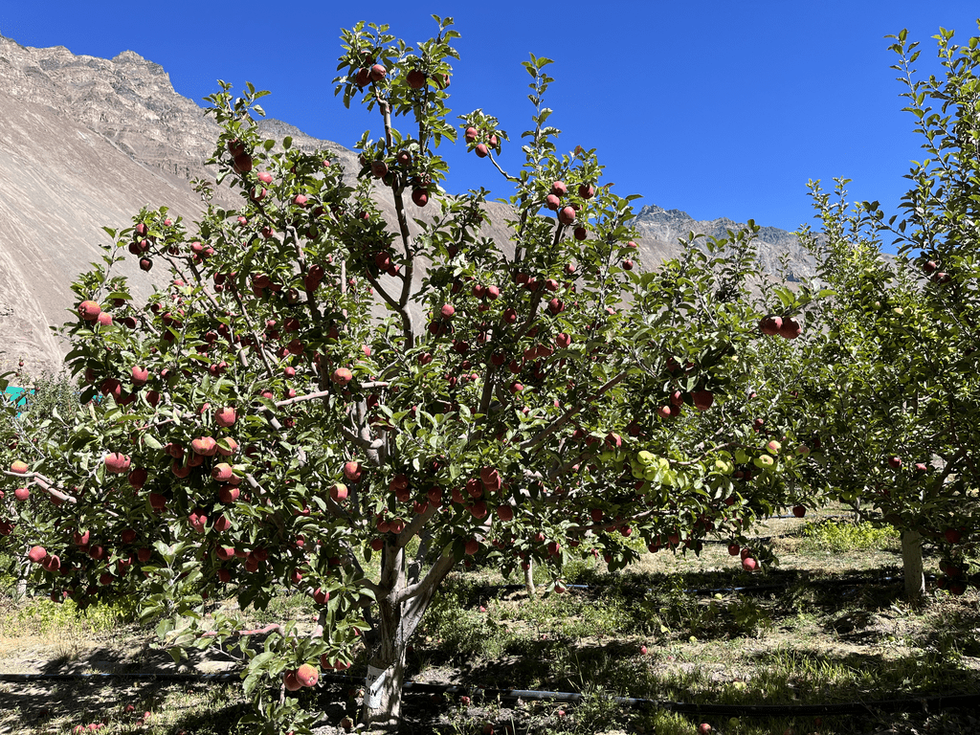
About Apple Cultivation:
- Apple (Malus pumila) is an important temperate fruit.
- However, in India, the apple-growing areas do not fall in the temperate zone but the prevailing temperate climate of the region is due to the Himalayan ranges and high altitudes.
- Climatic conditions required:
- Temperature:The average summer temperature should be around 21-24 degrees C during the active growth period.
- It can be grown at an altitude of 1500- 2700 m above sea level.
- Rainfall:Well-distributed rainfall of 1000-1250 mm throughout the growing season is most favourable for the optimum growth and fruitfulness of apple trees.
- Soil:Apples grow best on well-drained, loamy soils.
- Apple growing areas in India:
- In India apple is primarily cultivated in Jammu & Kashmir; Himachal Pradesh; the hills of Uttar Pradesh and Uttaranchal.
- It is also cultivated to a small extent in Arunachal Pradesh; Nagaland; Punjab and Sikkim.
Prelims Pointers
May 17, 2024

About Swachhata Pakhwada:
- It is an initiative launched in April, 2016 under the Swachh Bharat Mission.
- Objective: It was launched with the objective of bringing a fortnight of intense focus on the issues and practices of Swachhata by engaging the central government ministries/departments.
- Aim: It aims to include all ministries and departments through a common programme to contribute for Swachh Bharat Mission.
- An annual calendar is pre-circulated among the ministries to help them plan for the Pakhwada activities.
- The ministries observing Swachhata Pakhwada are monitored closely using the online monitoring system of Swachhata Samiksha where action plans, images, videos related to Swachhata activities are uploaded and shared.
- For the Pakhwada fortnight, observing ministries are considered as ‘Swachhata Ministries’ and are expected to bring qualitative swachhata improvements in their jurisdictions.
Key facts about Swachh Bharat Mission:
- The Indian government launched the swachh bharat mission on October 2, 2014.
- The mission covered all rural and urban areas.
- The urban component of the mission is implemented by the Ministry of Urban Development, and the rural component by the Ministry of Drinking Water and Sanitation.
- The programme includes elimination of open defecation, conversion of unsanitary toilets to pour flush toilets, eradication of manual scavenging, municipal solid waste management and bringing about a behavioural change in people regarding healthy sanitation practices.
Prelims Pointers
May 17, 2024

About PREFIRE Polar Mission:
- The Polar Radiant Energy in the Far-InfraRed Experiment (PREFIRE) polar mission consists of twin satellites, each carrying one instrument and measuring the poles about six hours apart.
- Objective: The objective of the mission is to reveal the full spectrum of heat loss from Earth’s polar regions for the first time, making climate models more accurate.
- Aim:
- The data from PREFIRE mission is aimed at addressing the gap in knowledge and provide data to improve predictions of climate change and sea level rise.
- Provide new information on how Earth’s atmosphere and how ice influences the amount of heat being radiated out to space from the Arctic and Antarctic.
- How will the satellites work?
- The mission with cube satellites about the size of a shoebox will be launched aboard an Electron launch vehicle.
- It is equipped with technology proven on Mars and will measure a “little-studied portion” of the radiant energy emitted by Earth.
- Two satellites carrying a thermal infrared spectrometer will be in asynchronous near-polar orbits and will be passing over a given spot on Earth at different times. To maximize coverage, they will be overlapping every few hours near the poles.
- The instruments weighing less than 6 pounds (3 kilograms) each will make readings using a device called a thermocouple, similar to the sensors found in many household thermostats.
- The mission will help in
-
- Understand why the Arctic has warmed more than 2½ times faster than the rest of the planet since the 1970s.
- Give scientists a better idea of how efficiently far-infrared heat is emitted by matter like snow and sea ice and how clouds influence the amount of far-infrared radiation that escapes to space.
- It will help researchers better predict how the heat exchange between Earth and space will change in the future, and how those changes will affect phenomena like ice sheet melting, atmospheric temperatures, and global weather.
Prelims Pointers
May 17, 2024
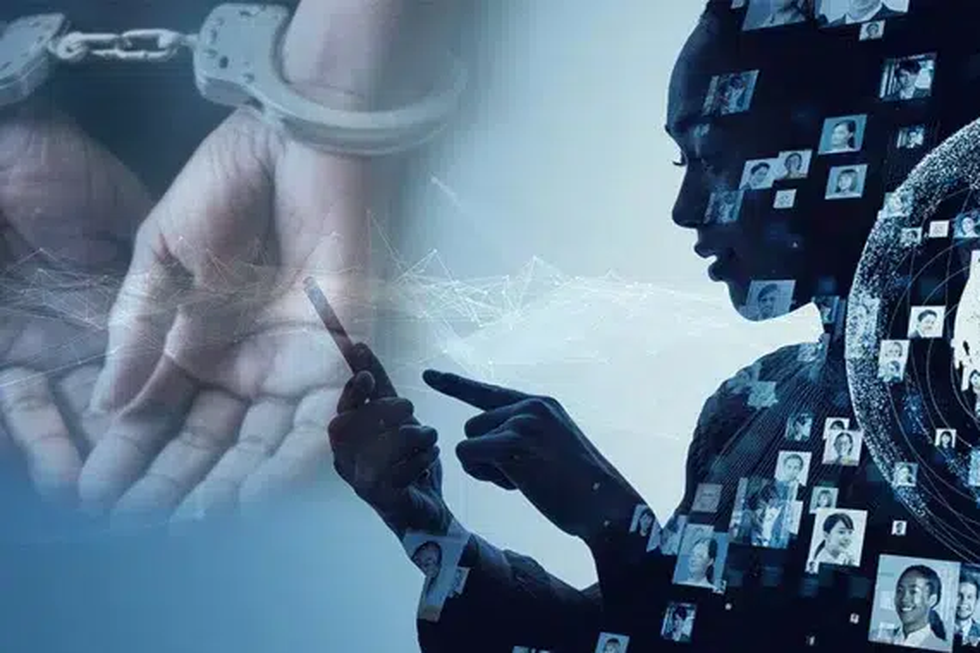
About Digital Arrest:
- It is a new and innovative tactic employed by cybercriminals to defraud gullible victims and extort money.
- Modus operandi:
- The modus operandi in this cybercrime method is that fraudsters pose as law enforcement officials such as police, Enforcement Directorate, CBI, among others and manipulate them into believing that they have committed some serious crime.
- In certain cases, the victims are “digitally arrested” and forced to stay visible over Skype or other video conferencing platforms to the criminals until their demands are met.
- The cyber fraudsters deceive the victim into believing that he or she has been put under ‘digital arrest’ and will be prosecuted if they do not pay the scamsters a huge amount of money.
- The cyber criminals often force the naive victims to self-arrest or self-quarantine themselves, by tricking them into believing that they have been put under ‘digital arrest’ and cannot leave their house unless they pay up.
- Preventing measures
- Cyber Hygiene: It is done by regularly updating passwords, and software and also enabling two-factor authentications to reduce the chances of unauthorized access.
- Phishing Attempts: These can be evaded by refraining from clicking on dubious links or downloading attachments from unknown sources and also authenticating the legitimacy of emails and messages before sharing any personal information.
- Secured devices: By installing reputable antivirus and anti-malware solutions and keeping operating systems and applications up to date with the latest security protocols.
- Virtual Private Networks (VPNs): VPNs can be employed to encrypt internet connections thus enhancing privacy and security. However one must be cautious of free VPN services and OTP only for trustworthy providers.
- Secure communication channels: Secure communication techniques such as encryption can be done for the protection of sensitive information. Sharing of passwords and other information must be cautiously done especially in public forums.
- Awareness: There is a need for preventive measures and increased public awareness.
Prelims Pointers
May 17, 2024
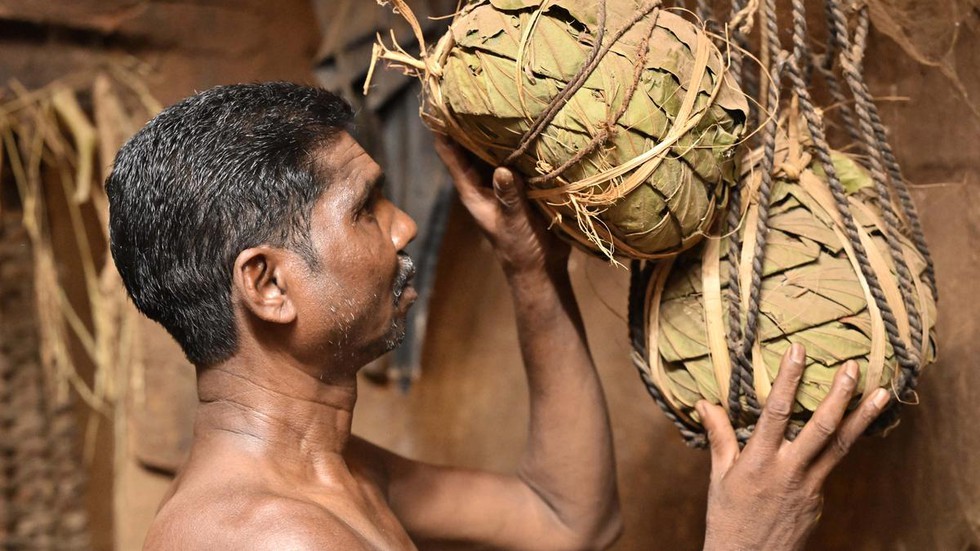
About Deda Method:
- It is a method of preserving seeds that his ancestors handed over to his family.
- How do they preserve?
- The seeds are preserved in leaves and packed almost airtight to look like boulders from a distance.
- The packaged seeds are, in turn, woven with Siali leaf (Bauhinia vahlii), which is locally known as ‘addakulu’ to make the deda.
- A deda has three layers. In the first layer, wood ash is spread inside the Siali leaves.
- Later, the ash is covered with lemon leaves to form a casing, and, lastly, the seeds are preserved inside the casing and sealed. Each deda is crafted to support at least 5kg of seeds.
- Advantages
- The deda method guarantees the protection of seed from pests and worms.
- In this method, the stored seeds can be used for cultivation of up to five years.
- It helps in preserving the seeds of pulses like the green gram, red gram, black gram and beans.
Key facts about Muria Tribe:
- Location:They are located in the states of Telangana, Andhra Pradesh, Chhattisgarh and Odisha. They speak Koya, which is a Dravidian language.
- The Muria settlements are known as habitations of Internally Displaced People(IDPs), whose population is around 6,600 in A.P., and they are referred to as ‘Gutti Koyas’ by the native tribes.
- They have a progressive perspective towards marriage and life as a whole. The biggest example is the Ghotul(a commune or dormitory), which is meant to create an environment for Muria youth to understand their sexuality.
- While most Gutti Koya belong to Gond or Muria communities, which are scheduled tribes in Chhattisgarh, they are not recognized in Telangana.
Prelims Pointers
May 17, 2024
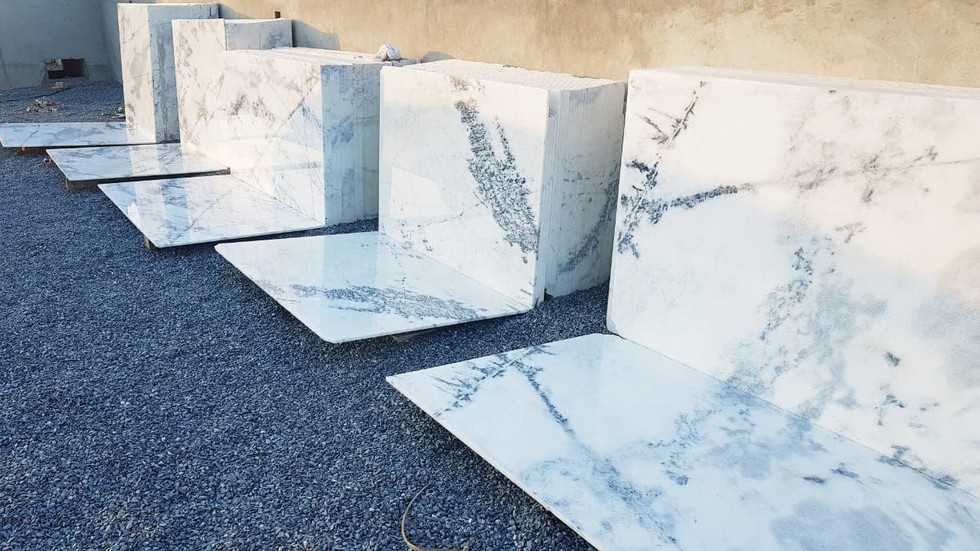
About Ambaji White Marble:
- It is a type of marble known for its stunning white appearance and unique natural patterns. It is named after the town of Ambaji in the state of Gujarat, where it is predominantly quarried. It is also known as Amba White Marble and Ambe White Marble.
- It is characterized by its pristine white colour, which often features subtle grey or beige veining.
- The veins can vary in intensity, ranging from fine and delicate to bold and pronounced, giving each slab a distinct and individualistic appearance.
- These variations occur naturally due to the presence of minerals and impurities during the marble formation process.
- It has very long-lasting shine and durability.
- The smooth and polished surface of the marble adds to its appeal and sophistication.
- It is widely used for luxury architectural projects, sculptures, and monuments.
Key Facts about Marble:
- Marble is a metamorphic rock that forms when limestone is subjected to the heat and pressure of metamorphism.
- It is composed primarily of the mineral calcite(CaCO3) and usually contains other minerals, such as clay minerals, micas, quartz, pyrite, iron oxides and graphite.
- Under the conditions of metamorphism, the calcite in the limestone recrystallizes to form a rock that is a mass of interlocking calcite crystals.
- A related rock, dolomitic marble, is produced when dolostone is subjected to heat and pressure.
- The transformation of limestone into marble usually occurs at convergent plate boundaries, where large areas of Earth's crust are exposed to the heat and pressure of regional metamorphism.
- Some marble also forms by contact metamorphism when a hot magma body heats adjacent limestone or dolostone. This process also occurs at convergent plate boundaries.
Prelims Pointers
May 17, 2024

About Doctrine of Lis Pendens:
- “Lis Pendens,” when translated, means “pending suit or cause.”
- This doctrine has been expressed in the maxim: "pendente lite nihil innovature" which means nothing new should be introduced during the pendency of litigation. This doctrine prohibits the transfer of property in pending litigation.
- It is dealt with in Section 52 of the Transfer of Property Act, 1882, in India.
- It serves to protect the rights and interests of parties involved in a pending lawsuit concerning a specific property.
- The doctrine of lis pendens can be defined as the legal authority, control, or jurisdiction that a court holds over the property in question during the entire duration of a lawsuit, extending until a final judgment is reached.
- The underlying rationale behind the doctrine of lis pendens is to prevent the subject matter of a lawsuit from being transferred to a third party while the case is still pending.
- Conditions for Applicability: The Supreme Court has stated the required elements for the applicability of the rule of lis pendens under Section 52. They are as follows:
-
- The suit must be in the proceeding.
- The instituted suit should be filed in court with competent jurisdiction.
- The right of title of an immovable property is directly and specifically in question.
- The suit directly affects the rights of the other party.
- The property in question is being transferred by either party.
- The suit must not be collusive (a suit in which a decree is obtained by a fraud or collusion) in nature.
- Non-Applicability of Doctrine: This doctrine is not applicable in certain cases. They are as follows:
- Sale made by mortgager in exercise of his power conferred under the deed.
- In cases where only the transferor is affected.
- In cases where proceedings are collusive in nature.
- When the property is not described correctly and makes it unidentifiable.
- When the right to the said property is not directly in question and alienation is permitted.
- This doctrine fails to apply when a court orders the restoration of immovable property under Rule 63 of order 21 under the Civil Procedure Code, 1908.
- Effect of Doctrine of Lis Pendens:
- The effect of the rule of lis pendens is not to invalidate or avoid the transfer but to make it subject to the result of the litigation.
- According to this rule, therefore, whosoever purchases property during the pendency of a suit is bound by the judgment that may be made against the person from whom he derived the title, even though such a purchaser was not a party to the action or had no notice of the pending litigation.
Prelims Pointers
May 17, 2024
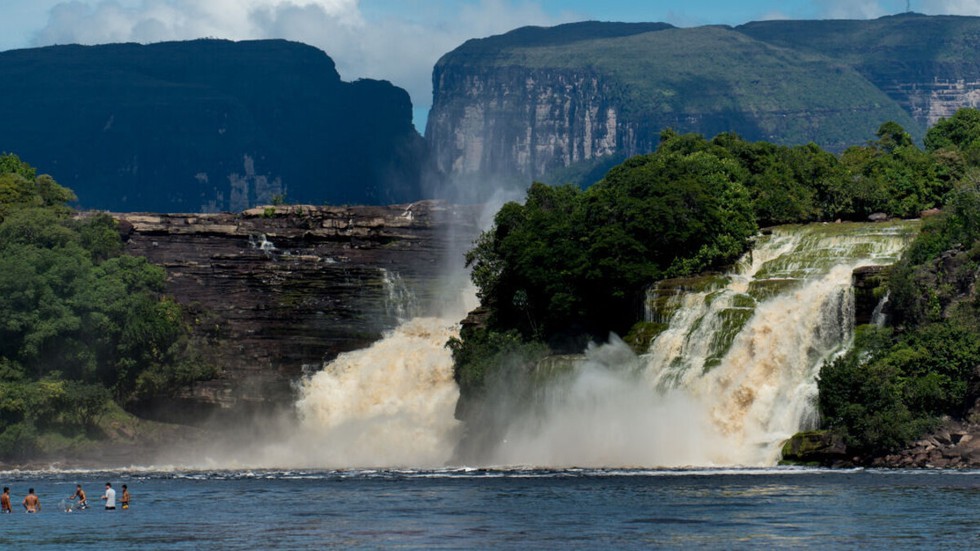
About Venezuela:
- It is located on the northern coast of South America with its capital located in Caracas.
- Boundaries: It is bounded by the Caribbean Seaand the Atlantic Ocean to the north, Guyana to the east, Brazil to the south, and Colombia to the southwest and west.
- A physiographically diverse country, Venezuela incorporates the northern Andean Mountain chains and interior highlands, the main portions of the Orinoco Riverbasin with its expansive Llanos (plains), Lake Maracaibo, which is the largest lake in South America and the spectacular Angel Falls, the world’s highest waterfall.
- Major Rivers:
- Rio Negro (shared with Colombia and Brazil): 2,250 km. It is a major tributary of the Amazon River.
- Orinoco (shared with Colombia): 2,101 km. It is the third-longest river in South America, after the Parana and the Amazon.
- Venezuela administers several Caribbean islands and archipelagos, among which are Margarita Island, La Blanquilla, La Tortuga, Los Roques, and Los Monjes.
- Since the early 19th century, Venezuela has claimed jurisdiction over Guyanese territory west of the Essequibo River, totaling some 53,000 square miles (137,000 square km)—nearly two-thirds of the land area of Guyana.
- Resources: Venezuela is home to the world’s largest oil reserves as well as huge quantities of coal, iron ore, bauxite, and gold.
- Languages: Spanish (official) 98.2%, indigenous 1.3%, Portuguese 0.1%, other 0.4% (2023 est.)
- Currency: Venezuelan bolívar
Prelims Pointers
May 17, 2024

About Synchrotron:
- A synchrotron is a type of circular particle accelerator, where particles move in a loop.
- It works by accelerating charged particles (electrons) through sequences of magnets until they reach almost the speed of light.
- These fast-moving electrons produce very bright light, called synchrotron light. This very intense light, predominantly in the X-ray region, is millions of times brighter than light produced from conventional sources and 10 billion times brighter than the sun. The light is channelled down beamlines to experimental workstations, where it is used for research.
- Scientists can use this light to study minute matter such as atoms and molecules.
- They can examine how a sample scatters, diffracts, absorbs, or reemits the synchrotron light, which reveals various different details of structure or chemical composition.
- There are approximately 70 synchrotrons around the world in various stages of development. There are technical differences between the use and capabilities of synchrotrons, with some being used for appliances and others for fundamental/theoretical research.
Key Facts about High Energy Photon Source (HEPS):
- Location: It is located approximately 50 kilometers from Beijing in Huairou, China.
- The HEPS is designed to accelerate electrons up to energies of 6 gigaelectron volts within its 36-kilometer circumference storage ring.
- This process will produce high-energy X-rays that can penetrate deep into samples, revealing intricate details at the nanometer scale.
- HEPS will provide researchers with access to 14 beamlines catering to diverse fields such as energy, condensed matter physics, materials innovation, and biomedicine.
- Compared to third-generation synchrotrons like the Shanghai Synchrotron Radiation Facility, which boasts a circumference of 432 meters and stands as China’s most advanced working synchrotron, HEPS will offer a time resolution 10,000 times superior.
Prelims Pointers
May 17, 2024
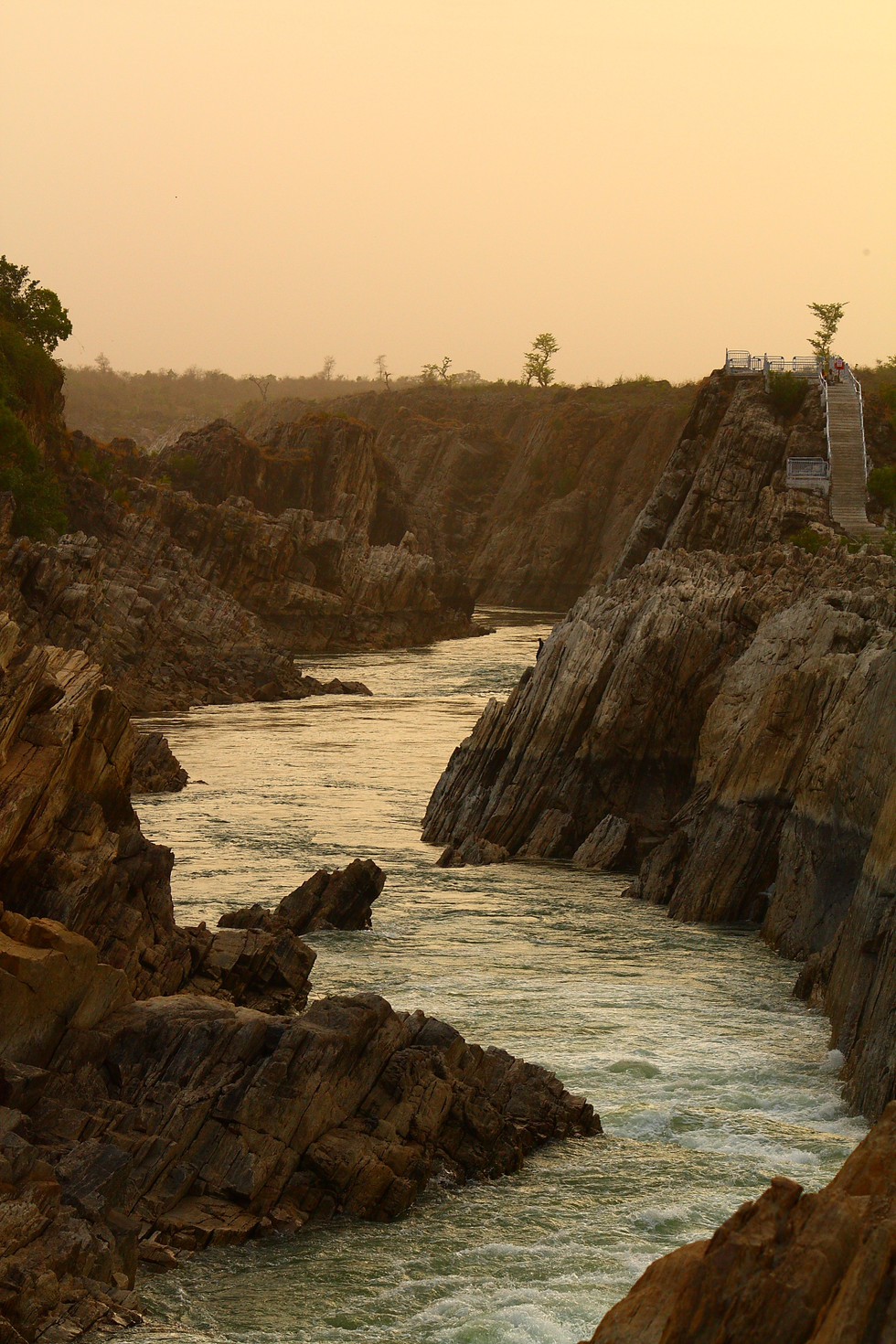
About Narmada River:
- It is the largest west-flowing river in peninsular India.
- Of the major rivers of peninsular India, only the Narmada, the Tapti and the Mahi run from east to west.
- Course:
- The origin of the river is a tiny reservoir named Narmada Kund, which is situated on Amarkantak Hillin East Madhya Pradesh at an elevation of 1,057 m (3,467.8 ft).
- The river flows through Madhya Pradesh, Maharashtra and Gujarat between Vindhya and Satpura hill ranges before falling into the Gulf of Cambay in the Arabian Sea about 10 km north of Bharuch, Gujarat.
- Length: The total length of the river from source to sea is 1312 kilometres (815 miles). It is the fifth longest river in India. The Narmada basin extends over an area of 98,796 sq. km., which is nearly 3% of the total geographical area of the country.
- The basin is bounded on the north by the Vindhyas, on the east by the Maikala range, on the south by the Satpuras and on the west by the Arabian Sea.
- The Tropic of Cancer crosses the Narmada basin in the upper plains area and a major part of the basin lies just below this line.
- It is one of the rivers that flow in a rift valley and acts as a divider between north India and south India.
- These rift valleys are the result of the faulting that took place when the northern flank of the Peninsula suffered subsidence.
- The river has numerous waterfalls, notably the Dhuandhar Falls, southwest of Jabalpur, Madhya Pradesh.
- Tributaries:
- The main tributaries of the Narmada River namely, Hallon River, Banjar River, Barna River,and Tawa River are the main source of water, irrigation and other resource-based activities in central India.
- The Tawa River is the longest tributary of the Narmada River.
May 16, 2024
Prelims Pointers
May 16, 2024

About Global Report on Internal Displacement 2024:
- It is an annual report published by the Geneva-based Internal Displacement Monitoring Centre (IDMC). It records internal displacements due to conflict and violence and disasters.
- Highlights of GRID-2024:
- In 2023, the number of internally displaced people (IDP) increased to 75.9 million, from 71.1 million in the preceding year.
- Report says 7.7 million displaced by disasters (one-fourth of it was caused by earthquakes) and 68.3 million by conflict and violence.
- Sudan, Syria, the Democratic Republic of the Congo (DRC), Colombia, and Yemen host nearly half of the world’s IDPs.
- At 1 million, Sudan has the highest number of IDPs recorded for a single country.
- Most of the new displacement this year happened in Sudan, the Palestinian territories, and the Democratic Republic of Congo, accounting for almost two-thirds of all new displacement.
- South Asia:
- The IDMC said around 3 million people were living in internal displacement as a result of conflict and violence across South Asia at the end of 2023, 80 percent of whom were in Afghanistan.
- Conflict and violence triggered 69,000 displacements in South Asia in 2023, with Manipur violence alone accounting for 67,000.
- It is the highest number of displacements triggered by conflict and violence in India since 2018.
- There is a sharp decline in IDP in 2023 from 2.5 million internal displacements due to natural disasters in India in 2022. Internal displacements by natural disasters in 2023 was 528,000.
Key Facts about Internal Displacement Monitoring Centre (IDMC):
- It is the leading source of information and analysis on internal displacement.
- It defines internal displacement as “the number of forced movements of people within the borders of their country recorded during (a) year.
- It was set up in 1998 at the request of the international community to fill an important knowledge gap on the global scale and patterns of internal displacement.
- It is part of the Norwegian Refugee Council (NRC), an independent, non-governmental humanitarian organisation.
- It plays a unique role as a global monitor and evidence-based advocate to influence policy and action by governments, UN agencies, donors, international organisations and NGOs.
- IDMC’s GRIDis the official repository of data and analysis on internal displacement.
Prelims Pointers
May 16, 2024

What is a Surety Bond?
- A surety bond is a promise to be liable for the debt, default, or failure of another.
- It is a three-party contract in which one party (the surety) guarantees the performance or obligations of a second party (the principal) to a third party (the obligee).
About Insurance Surety Bonds:
- It is a financial instrument, where insurance companies act as 'Surety' and provides the financial guarantee that the contractor will fulfil its obligation as per the agreed terms.
- It is a risk transfer mechanism wherein an insurer provides a guarantee to a beneficiary or obligee that the principal or contractor will meet his contractual obligations.
- In case the principal fails to deliver his promise, a monetary compensation is paid to the obligee by the insurer.
- There are 3 parties involved:
- The Surety (Insurance Companies) will provide the financial guarantee to the Obligee /beneficiary.
- Obligee or Beneficiary (example-Government, Infrastructure Development Authorities etc.) -the party that needs the surety and is often the beneficiary of the surety bond.
- Principal (could be the owner or contractor)-the party that purchases the Surety bond from an insurer as a guarantee and undertakes a commitment to perform the obligations as per the contract entered.
- Who can buy the policy?
- A surety bond is provided by the insurance company on behalf of the contractor or business owner to the entity which is awarding the project as a guarantee against the future work performance to Obligee.
- Advantages:
- It will act as a security arrangement for infrastructure projects and will insulate the contractor as well as the principal.
- Unlike a bank guarantee, the Surety Bond Insurance does not require large collateral from the contractor thus freeing up significant funds for the contractor, which they can utilize for the growth of the business.
- The product gives the principal a contract of guarantee that contractual terms and other business deals will be concluded in accordance with the mutually agreed terms.
Prelims Pointers
May 16, 2024
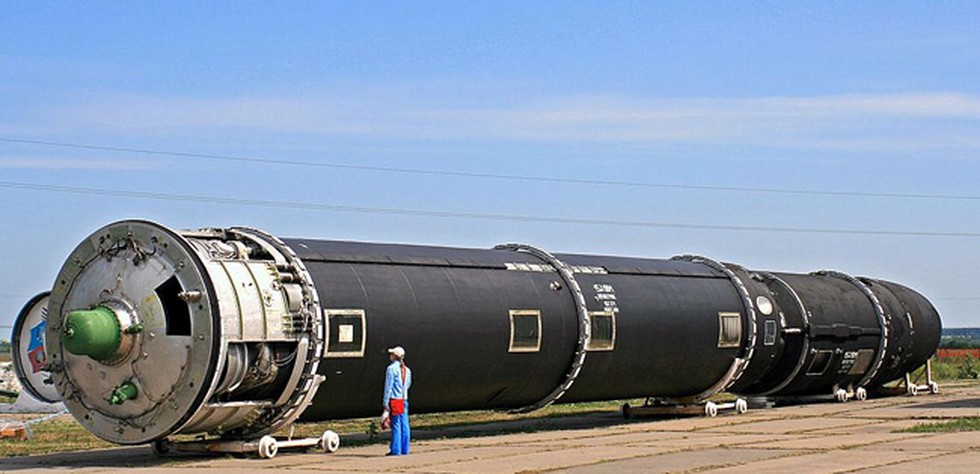
About Bulava Missile:
- RSM-56 Bulava (NATO reporting name: SS-N-32) is a Russian submarine-launched intercontinental ballistic missile (ICBM).
- Designed by the Moscow Institute of Thermal Technology, development of the missile was launched in the late 1990s, and is designed to be deployed on Russia’s Borei-class submarines.
- Bulava represents a core component of Russia’s future strategic nuclear force.
- Features:
- It is a three-stage solid-propellant
- The missile has a launch mass of about 8 tonnes and a throw weight of 1,150 kg.
- It measures 12.1 meters in length in a launch container and 2 meters in diameter.
- Bulava has a maximum range of 8,300 km (5,160 miles) and a payload of up to 10 multiple independently targetable re-entry vehicles, or MIRVs, capable of delivering nuclear warheads to different targets.
- The missile’s RVs are capable of in-flight maneuverability and re-targeting to out maneuver any enemy defense.
- The RVs have an expected accuracy of around 250 to 300 m.
Prelims Pointers
May 16, 2024

About Kadars:
- They are a small indigenous tribal community in South India.They reside along the hilly border between Cochin in Kerala and Coimbatore in Tamil Nadu.
- They are traditional forest dwellers who depend on forest produce for sustenance. They do not practice agriculture, building shelters thatched with leaves and shifting locations as their employment requires.
- They prefer to eat rice obtained in a trade or as wages rather than to subsist on food of their own gathering.
- They have long served as specialized collectors of honey, wax, sago, cardamom, ginger, and umbrella sticks for trade with merchants from the plains.
- They have a symbiotic relationship with nature, and they believe in the coexistence of Kadar and Kaadu (forest).
- The Kadar have traditional protocols to ensure the sustainable use of forest resources.
- Every practice of resource collection—be it honey, firewood, resin, or herbs—is designed to allow time for regeneration.
- Their population was estimated at approximately 2,000 individuals in the early 21st century.
- They speak the Dravidian languages of Tamil and Kannaḍa.
- They worship jungle spirits and their own kindly creator couple, as well as local forms of the Hindu deities.
- They are listed as a Particularly Vulnerable Tribal Group (PVTG) in Kerala, but not in Tamil Nadu.
Prelims Pointers
May 16, 2024
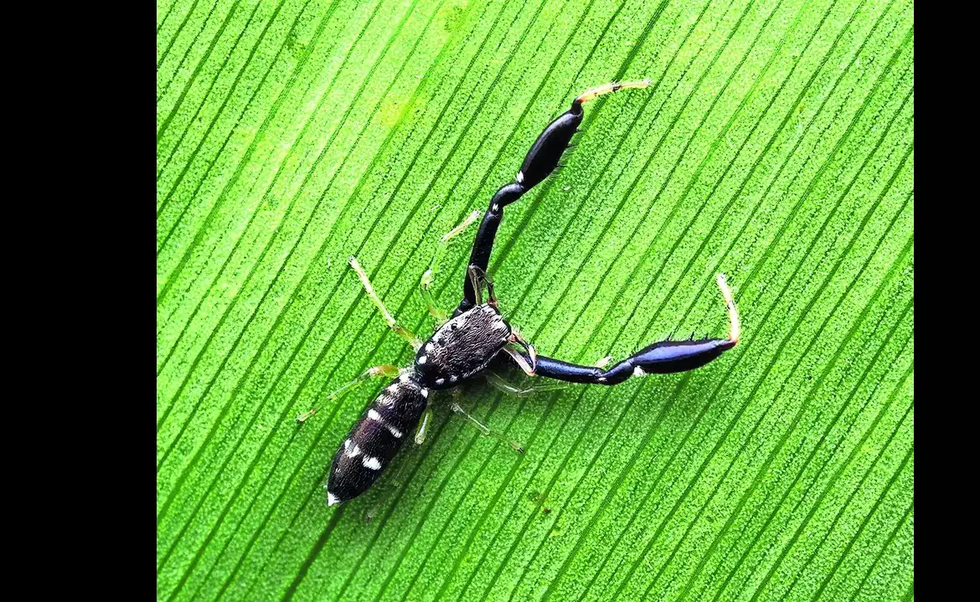
About Ligdus Garvale:
- It is a new species of jumping spider. It marks only the second recorded instance of the Ligdus genus in 129 years.
- It was found in Garvale village of the Kodagu district, Karnataka, which is surrounded by agroforestry, with coffee plantations being prominent along with pepper and paddy fields.
- It was discovered under the leaf of a torch ginger plant and bears a resemblance to Pseudoscorpions.
- Due to its nature as a high canopy jumper, it often goes unnoticed and constructs a double-layered web for retreat.
What are Jumping Spiders?
- Jumping spiders are the largest family of spiders, with more than 6,380 species (family Salticidae). They are known for their ability to jump and pounce upon their prey.
- They are very common in the tropics, but some also live in northern and even Arctic regions.
- Features:
- Though there are a few species that have hairy bodies, most species have few hairs (setae).
- The body is often brightly coloured or strikingly patterned.
- They have impressive eyesight. These arachnids always have four pairs of eyes, including a large, forward-facing principal pair.
- They are diurnal, and most jumping spiders are solitary.
Prelims Pointers
May 16, 2024
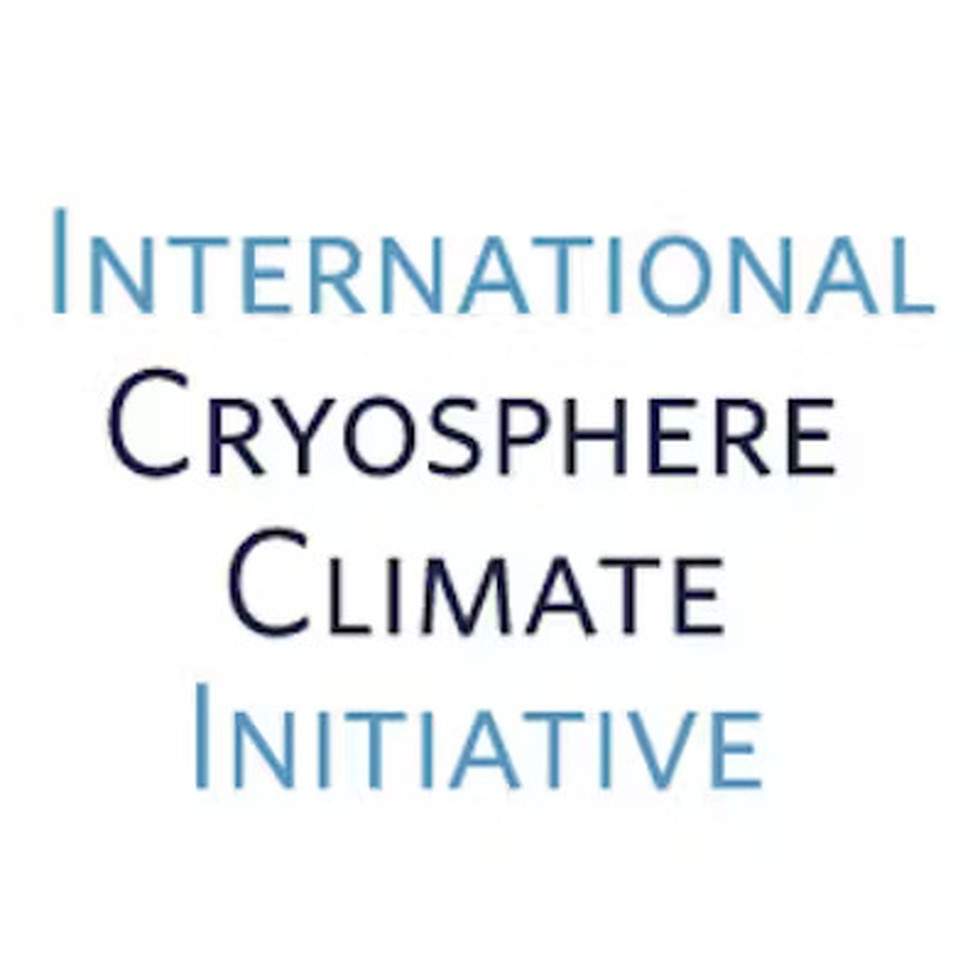
About International Cryosphere Climate Initiative:
- It was formed in 2009 following COP-15 in Copenhagen meeting. It is a network of senior policy experts and researchers working with governments and organizations to create, shape and implement initiatives designed to preserve as much of the Earth’s cryosphere as possible.
- Its programs target the unique climate dynamics at work in the cryosphere, while at the same time lending increased urgency to global climate efforts aimed at CO2 and other greenhouse gases by communicating the unexpected rapidity and global implications of cryosphere warming.
- Its work focuses on three major areas of the cryosphere: the Arctic, the Antarctic and high mountain regions.
Key facts about Humboldt glacier of Venezuela
- It is also known as La Corona glacier and it is 4,900 metres above sea level.
- It was the only one left near the country's second-highest peak, Pico Humboldt.
- It was projected to last at least another decade but latest assessments have found the glacier melted much faster than expected.
Prelims Pointers
May 16, 2024

About Sahul:
- It can be termed as a supercontinent which was stood exposed on the Earth's surface when humans were in the middle of what can be termed as the last ice age.
- Since the ice age led to glaciation of water levels on the planet, it ended up exposing parts of land like Sahul which connected to currently known Australia to Papua New Guinea in the north and Tasmania in the south,
- It helped humans in ancient times to cross continents from Asia to Australia almost 7,000 decades ago.
What is Ice age period?
- It is any geologic period during which thick ice sheets cover vast areas of land. Such periods of large-scale glaciation may last several million years and drastically reshape surface features of entire continents.
- The earliest known took place during Precambrian time dating back more than 570 million years.
- The most recent periods of widespread glaciation occurred during the Pleistocene Epoch (2.6 million to 11,700 years ago).
- Ice ages are not uniformly cold. There can be colder and warmer periods during the overall ice-age period.
- Colder periods lead to more extensive areas of continental ice sheets, valley glaciers and sea ice, while warmer periods lead to reduced areas of ice.
Prelims Pointers
May 16, 2024
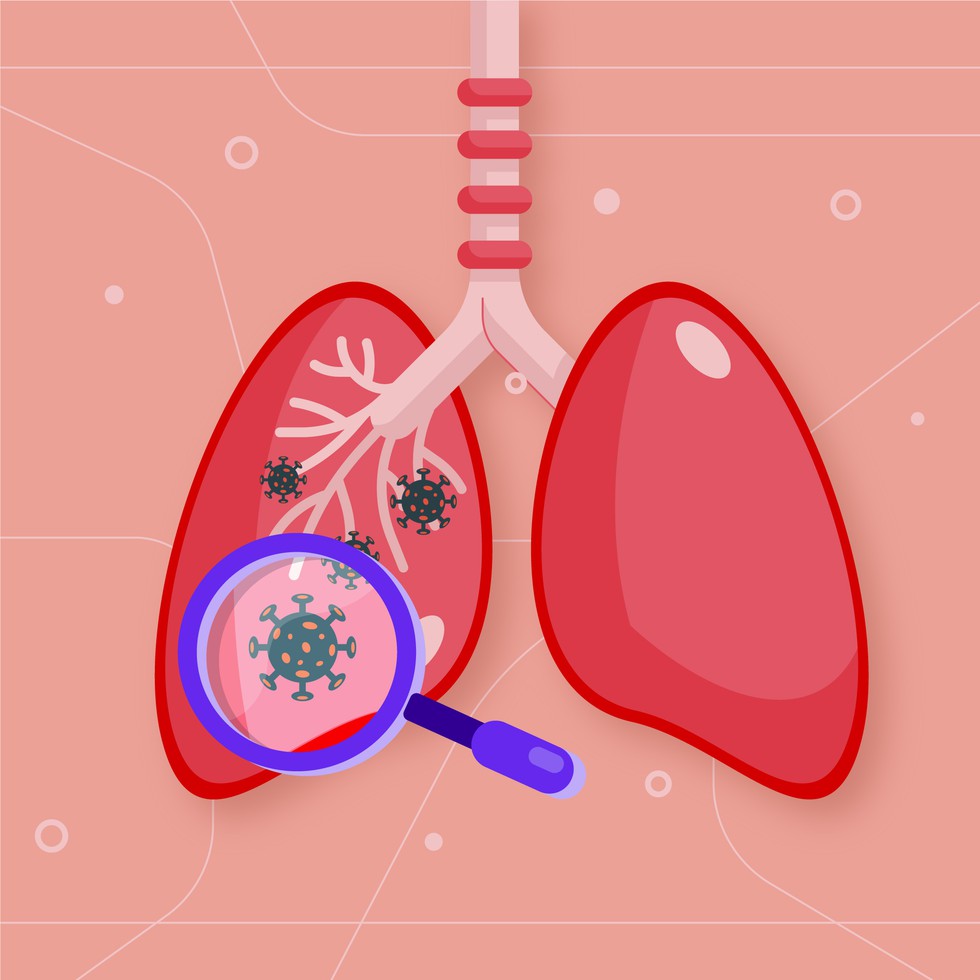
About Extra-pulmonary TB:
- It refers to Tuberculosis infections affecting organs other than the lung (namely lymph nodes, brain, gut, eyes, or other organs).
- It is often stain negative, which means it is not detectable on regular TB stain tests. It can affect any organ and is more prevalent in people living with HIV.
- The infection may surface in any part of the body and present itself like other non-TB conditions. Many cases of EPTB may not have a corresponding lung infection.
- Issues with EPTB
- A troubling aspect of EPTB infection is the prolonged presence of disease markers even after the infection is resolved with treatment.
- Diagnosis and treatment protocols for all organs affected by EPTB do not exist.
- The twin challenges in tackling EPTB are lack of awareness, even among physicians, and lack of accurate diagnostic and treatment criteria.
- Some EPTB patients who complete anti-TB therapy may still find themselves affected by the disease.
- INDEX-TB guidelines were formulated over a decade ago and need to be updated with the latest data and experience.
Prelims Pointers
May 16, 2024

About Kanwar lake:
- It is Asia’s largest freshwater oxbow lake located in It is also known as Kabartal jheel which is a rainfed lake.
- It is a residual oxbow lake, formed due to the meandering of Gandak river, a tributary of Ganga. It is covering the majority of the Indo-Gangetic plains in northern Bihar,
- The Wetland is an important stopover along the Central Asian Flyway, with 58 migratory waterbirds using it to rest and refuel. It is also a valuable site for fish biodiversity with over 50 species documented.
- Five critically endangered species inhabit the site, including three vultures – the red-headed vulture (Sarcogyps calvus), white-rumped vulture (Gyps bengalensis) and Indian vulture (Gyps indicus) – and two waterbirds, the sociable lapwing (Vanellus gregarius) and Baer’s pochard (Aythya baeri).
- Threats:Major threats to the site include water management activities such as drainage, water abstraction, damming and canalization.
What is an oxbow lake?
- It is a curved lake formed alongside a winding river as a result of erosion and sediment deposition over time.
- Oxbow lakes are typically crescent-shaped and are common features in floodplains and low-lying areas near rivers.
Prelims Pointers
May 16, 2024
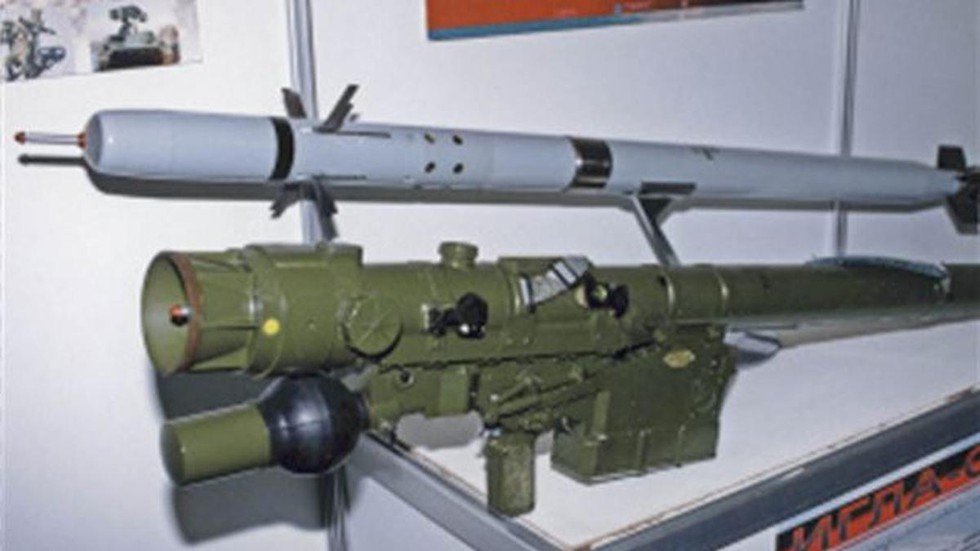
About Igla-S:
- It is a man-portable air defence system (MANPADS) developed by Russia.
- Capabilities:
- It is a hand-held defence system that can be operated by an individual or crew.
- It is designed to bring down low-flying aircraft and can also identify and neutralise air targets such as cruise missiles and drones.
- It comprises the 9M342 missile, the 9P522 launching mechanism, the 9V866-2 mobile test station, and the 9F719-2 test set. These components work together to provide a comprehensive air defence solution.
- A VSHORAD is the soldier’s last line of defence against enemy combat aircraft, helicopters and UAVs in the multilayered air defence network.
- Range: It has a range of 500 metres to 6 kilometres and attack targets up to an altitude of 3.5 kilometres. The speed of the missile is 400 metres per second and the deployment time is 13 seconds.
- Significance: The acquisition of the Igla-S MANPADS marks a significant step in enhancing India's air defence capabilities, particularly in mountainous regions.
May 15, 2024
Prelims Pointers
May 15, 2024

About Wholesale Price Index (WPI):
- It measures the changes in the prices of goods sold and traded in bulk by wholesale businesses to other businesses.
- It is calculated and published by the Office of Economic Advisor, Department of Industrial Policy and Promotion in the Ministry of Commerce and Industry.
- WPI data is published monthly, with the index value representing an estimate of the price level for the month as a whole, rather than a specific date.
- Analysts use the numbers to track the supply and demand dynamics in industry, manufacturing, and construction.
- An upward surge in the WPI indicates inflationary pressure in the economy, and vice versa. The quantum of rise in the WPI month-after-month is used to measure the level of wholesale inflation in the economy.
- Difference between WPI and Consumer Price Inflation (CPI) inflation:
- While the WPI keeps track of the wholesale price of goods, the CPI measures the average price that households pay for a basket of different goods and services.
- WPI is restricted to only goods, while CPI is for both goods and services.
- Even as the WPI is used as a key measure of inflation in some economies, the Reserve Bank of India (RBI) no longer uses it for policy purposes, including setting repo rates. The RBI currently uses CPI, or retail inflation, as a key measure of inflation to set monetary and credit policy.
- New series of WPI: With an aim to align the index with the base year of other important economic indicators such as GDP and IIP, the base year was updated to 2011-12 from 2004-05 for the new series of WPI, effective from April 2017.
- How do you calculate WPI?
- It is calculated by taking a weighted average of the prices of a basket of goods, with each item’s weight determined by its share of total wholesale sales.
- The basket of goods comprises three major groups:
- Primary Articles(Weight 22.62%)
- Fuel and Power(Weight 13.15%)
- Manufactured Products (Weight 64.23%)
- The prices of a total of 697 items are tracked under the 2011-12 series of the WPI, which includes 117 primary items, 16 items of fuel and power, and 564 manufactured products.
Prelims Pointers
May 15, 2024
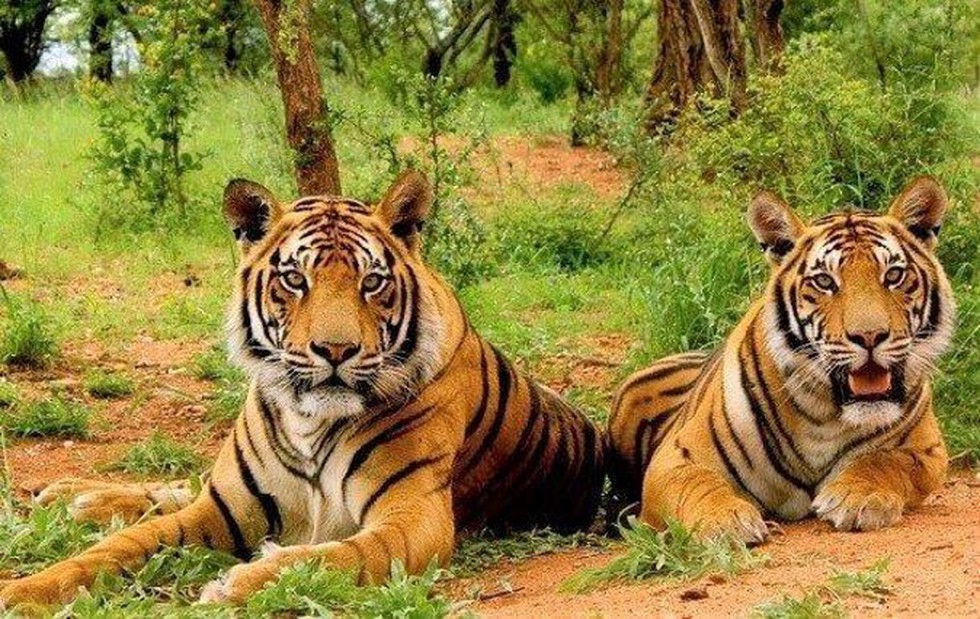
About Sariska Tiger Reserve:
- It is located in the Alwar district of Rajasthan. It is well nestled in the Aravali Hills, covering an area of 800 sq km. It is the first reserve in the world to successfully relocate tigers.
- Sariska is also famous for old temples, palaces, and lakes such as Pandu Pol, Bhangarh Fort, Ajabgarh, Pratapgarh, Siliserh Lake, and Jai Samand Lake.
- Topography: It possesses a rocky landscape, scrub thorn arid forests, grasses, hilly cliffs, and semi deciduous wood.
- Vegetation: The vegetation of Sariska corresponds to Northern Tropical Dry Deciduous Forests and Northern Tropical Thorn Forest.
- Flora:
- Nearly 90% of the area in the sanctuary is covered with dhok trees.
- Other species found include salar, kadaya, gol, ber, Banyan, gugal, bamboo, kair, adusta, etc.
- Fauna: A variety of other wild animals, like the leopard, sambhar, chital, nilgai, four-horned antelope, wild boar, rhesus macaque, langur, hyena and jungle cats are found in the reserve apart from the tiger.
Prelims Pointers
May 15, 2024

About Geomagnetic Storms:
- A geomagnetic storm is a major disturbance of Earth's magnetosphere that occurs when there is a very efficient exchange of energy from the solar wind into the space environment surrounding Earth.
- These storms result from variations in the solar wind that produce major changes in the currents, plasmas, and fields in Earth’s magnetosphere.
- The solar wind conditions that are effective for creating geomagnetic storms are sustained (for several hours) periods of the high-speed solar wind and a southward-directed solar wind magnetic field (opposite the direction of Earth’s field) at the dayside of the magnetosphere.
- The largest such storms are associated with solar coronal mass ejections (CMEs), where a billion tons or so of plasma from the sun, with its embedded magnetic field, arrives at Earth.
- Effects:
- It results in intense currents in the magnetosphere, changes in the radiation belts, and changes in the ionosphere, including heating the ionosphere and an upper atmosphere region called the thermosphere.
- These storms can heat the ionosphere, causing beautiful auroras on earth.
- Because the ionosphere is heated and distorted during storms, long-range radio communication that relies on sub-ionospheric reflection gets affected.
- Ionospheric expansion due to these storms can increase satellite drag and make their orbits difficult to control.
- Satellite electronics can be damaged through the buildup and discharge of static-electric charges.
- It can disrupt global navigation systems.
- It can create harmful geomagnetic-induced currents (GICs) in the power grid and pipelines.
What is Solar Wind?
- It is a continual stream of protons and electrons from the sun's outermost atmosphere, the corona.
- These charged particles breeze through the solar system at speeds ranging from around 250 miles (400 kilometers) per second to 500 miles (800 km) per second, in a plasma state.
- Solar magnetic field is embedded in the plasma and flows outward with the solar wind. Different regions of the Sun produce solar wind of different speeds and densities.
- When the solar wind reaches Earth, it sends a flurry of charged particles into the magnetosphere and along Earth's magnetic field lines, towards the poles.
Prelims Pointers
May 15, 2024
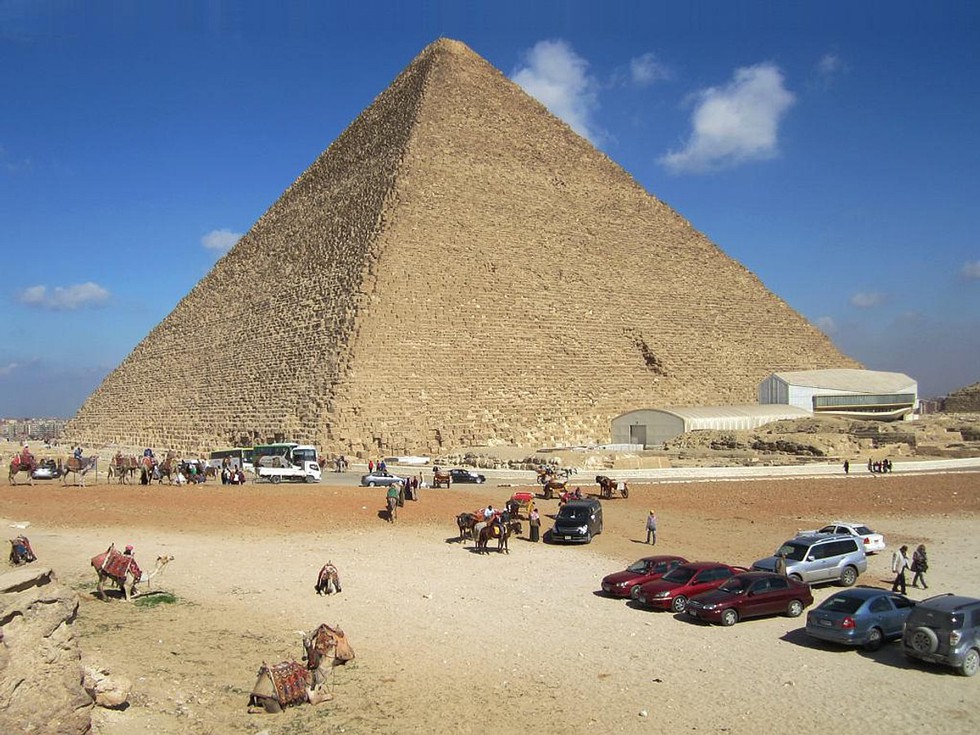
About Great Pyramid of Giza:
- The Great Pyramid of Giza, also called Great Pyramid and Great Pyramid of Khufu, is an ancient Egyptian pyramid that is the largest of the three Pyramids of Giza.
- Location: It is located on the Giza plateau,five miles to the west of the Nile River, near the city of Cairo, Egypt.
- It was built by Khufu (Cheops), the second king of Egypt’s 4th dynasty(c. 2575–c. 2465 BCE). Its construction began around 2580 BC, shortly after Khufu became pharaoh, and was completed around 2560 BC.
- Until the Eiffel Tower was completed in Paris, France, in 1889, the Great Pyramid was the tallest structure made by human hands in the world; a record it held for over 3,000 years.
- The pyramid was first excavated using modern techniques and scientific analysis in 1880 by Sir William Matthew Flinders Petrie (l.1853-1942), the British archaeologist.
- Features:
- When the pyramid was built, it was around 481 feet tall. Today, because of erosion and the removal of the top piece, the pyramid is around 455 feet tall. At its base, each side is approximately 755 feet long.
- It is comprised of over two million blocks of stone. Each of the stone blocks is estimated to weigh over 2000 pounds (907 kg).
- Inside the Great Pyramid are three major rooms: the King's Chamber, the Queen's Chamber, and the Grand Gallery. Small tunnels and air shafts lead to the chambers from the outside.
- The pyramid’s sides rise at an angle of 51.87° and are accurately oriented to the four cardinal points of the compass.
- The Great Pyramid’s core is made of yellowish limestone blocks, and the inner passages are of finer, light-coloured limestone.
- The interior burial chamber is built of huge blocks of granite.
Key facts about the Pyramids of Giza:
- These are three 4th-dynasty (c. 2575–c. 2465 BCE) pyramids erected on a rocky plateau on the west bank of the Nile River in northern Egypt.
- The designations of the pyramids—Khufu, Khafre, and Menkaure—correspond to the kings for whom they were built.
- The northernmost and oldest pyramid of the group was built for Khufu, the second king of the 4th dynasty.
- The middle pyramid was built for Khafre, the fourth of the eight kings of the 4th dynasty.
- The southernmost and last pyramid to be built was that of Menkaure, the fifth king of the 4th dynasty.
- The Pyramids of Giza is the last remaining of the Seven Wonders of the ancient world.
Prelims Pointers
May 15, 2024

About Indian Cyber Crime Coordination Centre (I4C):
- It has been established under the Ministry of Home Affairs (MHA) to deal with cybercrime in the country in a coordinated and comprehensive manner.
- It focuses on tackling issues related to cybercrime for citizens, including improving coordination between various Law Enforcement Agencies (LEAs) and stakeholders. The centre is located in New Delhi.
- Functions:
- To act as a nodal point in the fight against cybercrime.
- Identify the research problems and needs of LEAs and take up R&D activities in developing new technologies and forensic tools in collaboration with academia / research institutes within India and abroad.
- To prevent misuse of cyberspace for furthering the cause of extremist and terrorist groups.
- Suggest amendments, if required, in cyber laws to keep pace with fast changing technologies and international cooperation.
- To coordinate all activities related to implementation of Mutual Legal Assistance Treaties (MLAT) with other countries related to cybercrimes in consultation with the concerned nodal authority in MHA.
- Components of I4C:
- National Cybercrime Threat Analytics Unit (TAU): For reporting threats pertaining to cybercrimes at regular intervals.
- National Cybercrime Reporting Portal (NCRP): To report various cybercrime complaints by citizens at all India level on a common platform on a 24x7 basis from “anywhere, anytime”.
- National Cybercrime Training Centre (NCTC): To impart training to government officials, especially state law enforcement agencies.
- National Cybercrime Research and Innovation Centre: To carry out research for the development of indigenous tools for the prevention of cybercrimes.
- Platform for Joint Cyber Crime Coordination Team: For coordination, sharing of modus operandi of cybercrimes, data/information among states/UTs LEAs.
- Cybercrime Ecosystem Management Unit: For creating mass awareness in cyber hygiene for prevention of cybercrimes.
- National Cybercrime Forensic Laboratory (Investigation) Ecosystem: For helping LEAs in cyber forensics investigation.
- I4C brings together academia, industry, public and government in the prevention, detection, investigation, and prosecution of cybercrimes.
- I4C has envisaged the Cyber Crime Volunteers Program to bring together citizens with passion to serve the nation on a single platform and contribute in fight against cybercrime in the country.
- Other Initiatives:
- Citizen Financial Cyber Fraud Reporting and Management System: For immediate reporting of financial cyber frauds and preventing the siphoning of funds by cyber criminals on a near-real-time basis.
- National Toll- free Helpline number ‘1930’ has been operationalized to provide citizen assistance in lodging online cyber complaints.
- CyberDost handle on various social media platforms to generate cyber awareness among citizens.
Prelims Pointers
May 15, 2024
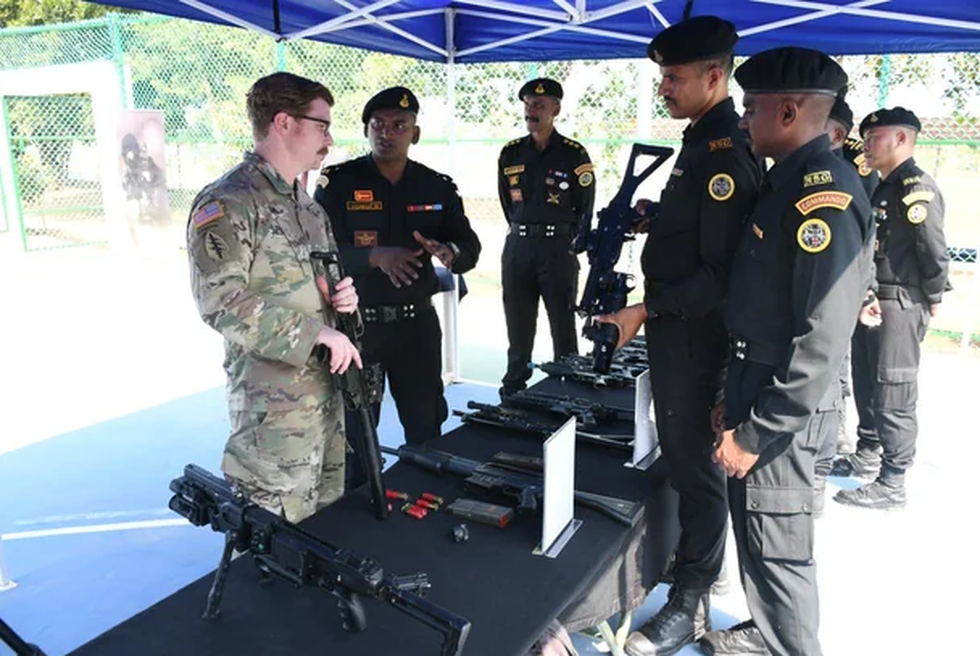
About Exercise Tarkash:
- It is the seventh edition of the Indo-U.S. joint counter terrorism exercise. It is held between the elite National Security Guard (NSG) and the U.S. Special Operations Forces (SOF) commenced on April 22, 2024.
- Objective: The primary objective of the bilateral exercise is to build functional relation and enhance interoperability between the two special forces in conducting coordinated counter terror operations in urban counter terrorism contingencies.
- It is also aimed at improving bilateral cooperation between India and the U.S. in matters relating to combating terrorism, in all its forms and manifestations,” a statement said.
- It also involved sharing of best practices, tactics, techniques and procedures, over a wide spectrum of counter terror operations, in urban environment including close quarter battle, building intervention drills and hostage rescue operations etc.
Prelims Pointers
May 15, 2024

About Nancy Grace Roman Space Telescope:
- It will provide one of the deepest-ever views into the heart of our Milky Way galaxy.
- Objectives:It will monitor hundreds of millions of stars in search of tell-tale flickers that betray the presence of planets, distant stars, small icy objects that haunt the outskirts of our solar system, and isolated black holes.
- Instruments of Telescope:
- Wide Field Instrument:It will have a field of view that is 100 times greater than the Hubble infrared instrument, capturing more of the sky with less observing time.
- It will measure light from a billion galaxies over the course of the mission's lifetime.
- It will perform a microlensing survey of the inner Milky Way to find ~2,600 exoplanets.
- Coronagraph Instrument: It is a technology demonstration which will perform high contrast imaging and spectroscopy of individual nearby exoplanets.
- Its Galactic Bulge Time-Domain Surveywill focus on the Milky Way. For this, it will use infrared vision to peer through clouds of dust that can potentially block the view of the crowded central region of our galaxy.
- This telescope plans to capture this by taking an image every 15 minutes around the clock for about two months. This process will be repeated six times over Roman's five-year primary mission, which will total more than a year of observations.
Prelims Pointers
May 15, 2024

About Strait of Gibraltar:
- It is a narrow waterway separating Europe from Africa and connecting the Mediterranean Sea to the Atlantic Ocean.
- Location: Its narrowest point between Morocco’s Point Cires and Spain’s Point Marroquí. Its depth ranges from 300 to 900 m and it forms a significant gap between the high plateau of Spain and the Atlas Mountainsof Northern Africa.
- Formation: Geological studies have revealed that the Strait was formed due to the northward movement of the African Plate towards the European Plate.
- Water flow: The Atlantic Ocean and the Mediterranean Sea have different salinity levels and therefore the highly saline waters from the Mediterranean Sea flow outward and underneath the currents from the Atlantic Ocean, whereas the less saline Atlantic waters flow inward and on top of the Mediterranean Sea current.
- It acts as a chokepoint for the ships that move into or out of the Mediterranean Sea. However, it also functions as a vital shipping route for the countries of northern Africa, southern Europe, and western Asia.
- An important port located on the Strait of Gibraltar is the Moroccan port of Tanger-Med, near Tangier.
Prelims Pointers
May 15, 2024
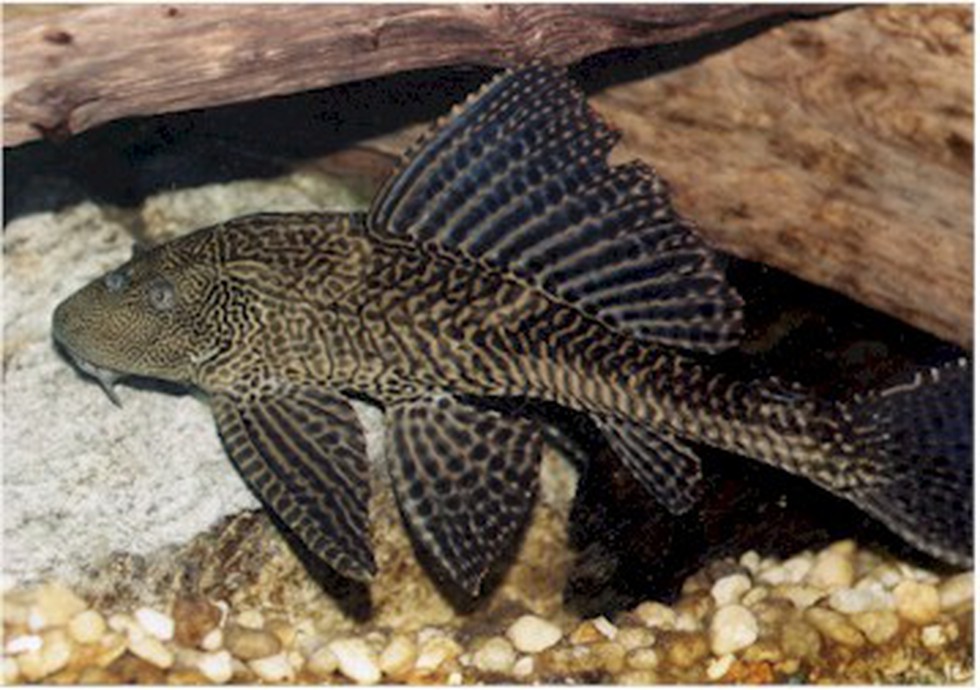
About Armoured Sailfin Catfish:
- It is commonly referred to as the Rakashior devil fish. Scientifically known as Pterygoplichthys and is an invasive species.
- It possesses an uncanny ability to subsist on a diverse diet and can endure oxygen-deprived conditions. It can even navigate on land using its powerful fins. It was once introduced for its unique appearance and its ability to clean algal growth in tanks and aquaria.
- Out of the 14 species listed as invasive by the National Biodiversity Authority (NBA) of India, six were introduced solely for the ornamental fish trade.
- Among those six listed species, four belong to Pterygoplichthys, remarking it to be one of the most invasive genera of fish.
- It has garnered notoriety due to its lack of commercial value, formidable sharp spines, and robust body, which pose a threat to fishing nets and have even caused injuries to fishermen in some instances.
- Impact on biodiversity: It is known to voraciously consume native fish species, jeopardizing the delicate aquatic ecosystem.
- Its population has grown exponentially and this was realised through a unique ‘eDNA-based quantitative PCR assay’ developed by the institute scientists to map the presence and spread of such invasive species,
What is eDNA?
- Environmental DNA (eDNA) is DNA shed by all organisms into their surroundings through natural processes during their lifetime or after death.
- Source:It originates from cellular material shed by organisms (via the skin, excrement, etc.) into aquatic or terrestrial environments that can be sampled and monitored using new molecular methods.
Prelims Pointers
May 15, 2024

About Memory of the World Programme:
- It is part of an international initiative launched by UNESCO in 1992 to safeguard the documentary heritage of humanity.
- It aims to recognise significant documentary heritage in a similar fashion to the way UNESCO’s World Heritage Convention and World Heritage List recognises significant natural and cultural sites.
- The Memory of the World Programme (MoW) aims to:
- Facilitate preservation of the world's documentary heritage, particularly in areas affected by conflict and/or natural disaster
- Enable universal access to documentary heritage worldwide
- Enhance public awareness about the significant of documentary heritage among the wider public
- Governance: The International Advisory Committee (IAC) is the main body responsible for advising UNESCO on the planning and implementation of this MoW Programme as a whole.
- It comprises 14 members serving in a personal capacity, appointed by the Director-General of UNESCO, and chosen for their authority in the field of documentary heritage.
- Nomination for MoW: The call for nominations and inscriptions on the Asia Pacific Register is made every two years unless unexpected circumstances make this impractical. Nominations will normally be called for in the even-number years (to alternate with the International Register).
- India’s 3 items included in Mow are:
- Ramcharitmanas: It was written by Tulasidas in the 16th century in the Awadhi dialect, which is primarily spoken in the districts of Lucknow, Prayagraj, and Ayodhya.
- Panchatantra: The Panchatantra of ancient India is a collection of fables originally written in Sanskrit. It has five distinct sections, each of which is focused on a specific principle and is believed to have been written by Vishnu Sharma.
- Sahṛdayāloka-Locana: It is a Sanskrit commentary on the Dhvanyaloka.
May 14, 2024
Prelims Pointers
May 14, 2024

About General Provident Fund (GPF):
- It is a kind of Public Provident Fund (PPF) account that is available only for government employees in India. It allows them to allocate a portion of their salaries to their GPF accounts.
- Upon retirement, employees receive the accumulated corpus from their GPF accounts, reflecting their service tenure contributions.
- As per the GPF rules, the following are eligible to subscribe to GPF account:
- All temporary government servants who have given their service for continuously one year
- All re-employed pensioners (except those eligible for admission to the contributory provident fund)
- All permanent government servants
- Contribution:
- It is a mandatory scheme for government employees, requiring them to contribute a certain percentage of their salary towards the fund.
- The contributions are deducted from the employee's monthly salary, and the amount earns interest at a predetermined rate.
- Employees can also increase their GPF deductions as per their choice.
- Withdrawal:
- Employees can withdraw their savings from the fund upon retirement or resignation from service.
- A GPF is flexible, allowing employees to withdraw money from the fund for various reasons, such as marriage, education, and medical emergencies.
- Employees can also take out loans against their GPF account, subject to certain conditions.
- Employees who transfer to another government department or leave their job can withdraw their GPF balance or transfer it to their new employer.
- The GPF sum will be paid to their nominee if the employee passes away.
- GPF also offers a competitive interest rate, revised quarterly.
- The GPF scheme is administered by the Department of Pension and Pensioners’ Welfare, falling under the Ministry of Personnel, Public Grievances and Pensions.
- This scheme offers several benefits to government employees, including tax savings, low-risk investments, and guaranteed returns.
Prelims Pointers
May 14, 2024

About India International Bullion Exchange (IIBX):
- It is India's first International Bullion Exchange. It is based at GIFT City (Gujarat International Finance Tech City) IFSC (International Finance Services Center), Gandhinagar, Gujarat.
- IIBX has been conceptualized to provide a gateway to import bullion into India and provide a world class bullion exchange ecosystem to promote bullion trading, investment in bullion financial products, and vaulting facilities in IFSCs.
- It will facilitate Transparent Price Discovery, Responsible sourcing and supply chain integrity, Quality Assurance and Standardization.
- The IIBX is regulated by the International Financial Services Centers Authority (IFSCA), a unified authority for the development and regulation of financial products, financial services, and financial institutions at IFSCs.
- Products and technology offered at IIBX are diversified, and available at a cost that is far more competitive than those at Indian exchanges, as well as global exchanges in Hong Kong, Singapore, Dubai, London, and New York.
- What is a bullion?
- Bullion refers to physical gold and silver of high purity that is often kept in the form of bars, ingots, or coins.
- Bullion can sometimes be considered legal tender and is often held as reserves by central banks or held by institutional investors.
Key Facts about International Financial Services Centers Authority (IFSCA):
- It is a statutory authorityestablished under the International Financial Services Centres Authority Act, 2019 (“IFSCA Act”).
- Mandate: To develop and regulate the financial products, financial services, and financial institutions in the International Financial Services Centres (‘IFSC’).
- It aims to develop a strong global connection and focus on the needs of the Indian economy, as well as serve as an international financial platform for the entire region.
- Before the establishment of IFSCA, the domestic financial regulators, namely, RBI, SEBI, PFRDA, and IRDAI regulated the business in IFSC.
- GIFT-IFSC is the maiden IFSC in India.
Prelims Pointers
May 14, 2024
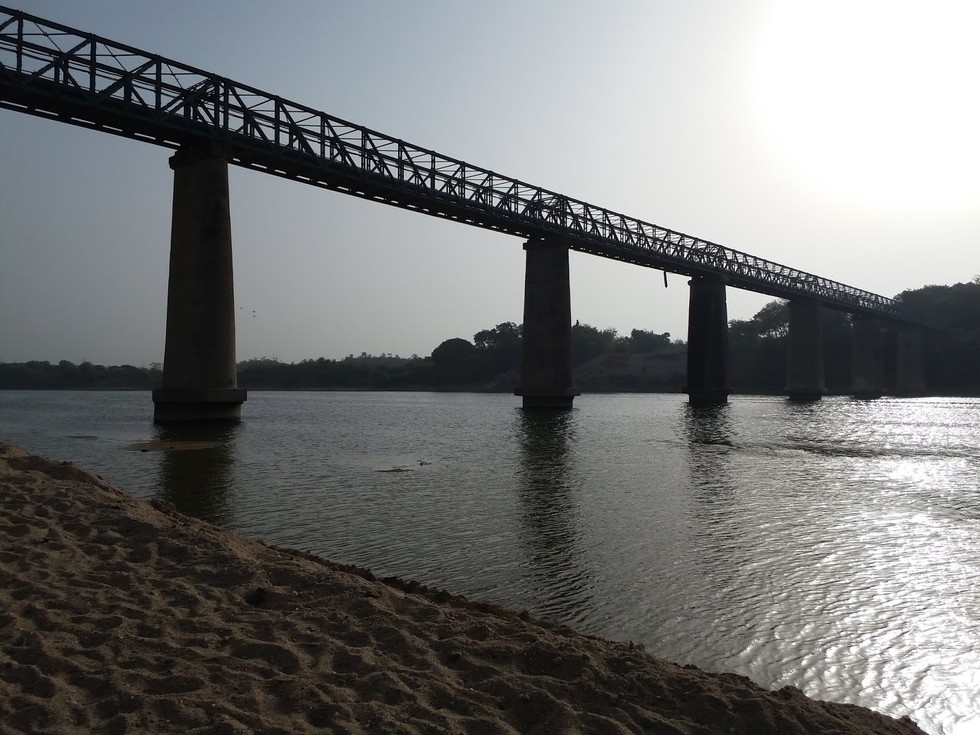
About Mahi River:
- It is one of the major west-flowing interstate rivers of India. It extends over the states of Madhya Pradesh, Rajasthan, and Gujarat, having a total drainage area of 34,842 Sq.km.
- Course:
- It originates from the northern slopes of Vindhyas at an altitude of 500 m near village Bhopawar, in the Dhar district of Madhya Pradesh, and flows through Madhya Pradesh for about 120 km in a southerly direction.
- It then enters the south eastern portion of Rajasthan, which is the Vagad region. The river flows through the Banswara district, which comes under the Vagad region.
- Before entering Gujarat, the river makes a 'U'-shaped loop in Rajasthan.
- It drains into the Arabian Sea through the Gulf of Khambhat.
- It is bounded by the Aravalli Hills on the north and the north-west, by the Malwa Plateau on the east, by the Vindhyas on the south, and by the Gulf of Khambhat on the west.
- Tributaries: The main tributaries of the river are Eru, Nori, Chap, Som, Jakham, Moran, Anas, Panam, and Bhadar.
- The Mahi River has a dam on it, namely, the Mahi Bajaj Sagar Dam. The whole of Gujarat gets water to drink and electricity from the dam.
Prelims Pointers
May 14, 2024

Why in News?
- The long-term agreement, to be valid for 10 years and extended subsequently, was being negotiated by the two sides over the past three years and had been held up over differences on a clause related to arbitration.
- It replaces an initial pact inked in 2016 that covered India’s operations at the Shahid Beheshti terminal of Chabahar port and has been renewed annually.
- India Ports Global Chabahar Free Zone (IPGCFZ), a subsidiary of state-run India Global Ports Limited (IGPL), currently operates the Shahid Beheshti terminal at Chabahar port.
- This is the first time India will take over the management of an overseas port.
About Chabahar Port:
- It is a deep-water port located in Iran’s Sistan-Baluchistan province. It is on the Gulf of Oman at the mouth of the Strait of Hormuz.
- It is the only Iranian port having direct access to the Indian Ocean. It consists of two separate ports called Shahid Beheshti and Shahid Kalantari.
- It's geographic proximity to countries such as Afghanistan, Pakistan, and India, as well as its status as a key transit center on the burgeoning International North-South Transport Corridor (INSTC), gives it the potential to develop into one of the most important commercial hubs in the region.
- INSTC is a multi-modal transportation route linking the Indian Ocean and the Persian Gulf to the Caspian Sea via Iran, and onward to northern Europe via Saint Petersburg in Russia.
- Kandla port in Gujarat is 550 Nautical Miles from Chabahar port, while the distance between Chabahar and Mumbai is 786 Nautical Miles.
- Chabahar Project:
- In May 2016, India signed a tripartite agreement with Iran and Afghanistan to develop the Shahid Beheshti Terminal at Chabahar.
- It is India's first foreign port project.
- The deal agreement aims to establish an international transport and transit corridor in Chabahar.
- The construction of the Chabahar Port and the construction of a rail line from Chabahar Port to Zahedan are the major highlights of this project.
- The idea was that the port would enable India to bypass Pakistan and access Afghanistan, and ultimately Central Asia.
- Moreover, the port could serve as a hub for transit trade between India, Iran, and Afghanistan and provide an alternative route to the traditional Silk Road that passes through China.
Prelims Pointers
May 14, 2024

About Exercise Shakti:
- It is a biennial training event conducted alternatively in India and France.
- Aim: To enhance the joint military capability of both sides to undertake multi-domain operations in a Sub-Conventional scenario under Chapter VII of the United Nations Mandate.
- The joint exercise will focus on operations in the semi-urban and mountainous terrain.
- Objectives to be achieved from the joint training are a high degree of physical fitness, rehearsing and refining drills for operations at the tactical level, and sharing of best practices.
- It will enable the two sides to share their best practices in Tactics, Techniques and Procedures for conducting joint operations.
- The Indian contingent comprises 90 personnel, primarily from the Rajput Regiment, along with personnel from other arms and services, participating in the exercise.
- Observers from the Indian Navy and the Indian Air Force are also part of this 14-day exercise.
- It will also include the French contingent, consisting of 90 personnel, mainly from the 13th Foreign Legion Half-Brigade (13th DBLE).
Prelims Pointers
May 14, 2024

About GPT-4o:
- GPT-4o (“o” for “omni”) offers GPT-4 level intelligence and it is much faster and improves its capabilities across text, vision, and audio.
- Features
- It makes human-to-machine interaction much more natural and far easier.
- The voice mode on GPT-4o is efficient and intuitively recognises the voice of the speaker or multiple speakers.
- Until now, the voice mode had three models that came together to deliver the feature. These are – transcription, intelligence, and text-to-speech and they all came together and orchestrated to deliver the voice mode. This led to latency, however, with GPT-4o all of this happens natively. “GPT-4o reasons across voice, text, and vision.
- It also has a vision, allowing users to upload photos and documents, and can start conversations about the same.
- One can also use the Memory feature, and browse to search real-time information during conversations. Also, OpenAI has improved the quality and the speed in 50 different languages.
- This model can pick up on a user’s emotions, and come up with different kinds of emotive styles of conversation.
- It is also capable of telling about your feelings by looking at your face in real-time.
Prelims Pointers
May 14, 2024

About Soil Nailing:
- It is a geotechnical engineering technique that involves the insertion of reinforcing elements into the soil in a specified area to strengthen it.
- This soil reinforcement process uses steel tendons which are drilled and grouted into the soil to create a composite mass similar to a gravity wall.
- Soil nailing methods
- Drilled and grouted soil nailing methods: The nails are inserted in the pre-drilled holes and filled with grouting materials.
- Driven Soil Nailing Method: It is used for temporary stabilization, it is fast. However, it does not provide corrosion protection to the steel or nails.
- Drilling Soil Nailing Method: In this method the hollow bars are used in this method, bars are drilled and grout is injected. This method is typically faster than driven nails.
- Jet Grouted Soil Nailing Method: This method is used for eroding soil for creating holes in the soil surface, steel bars are installed in this hole and grout with concrete.
- Launched Soil Nailing Method: This method involves nailing steel bars forced to the soil with a single shot using compression by an air mechanism.
- It is commonly used for
- Stabilizing slopes and landslides
- Supporting excavations
- Repairing existing retaining walls
What is hydroseeding?
- It is a process of applying a mixture of seeds, fertilizer, organic materials and water onto the soil to facilitate the growth of grass and plant-life, that will help hold the top soil together and prevent erosion.
Prelims Pointers
May 14, 2024

About Xenotransplantation:
- It is any procedure that involves the transplantation, implantation or infusion into a human recipient of either live cells, tissues, or organs from a nonhuman animal source or human body fluids, cells, tissues or organs that have had ex vivo contact with live nonhuman animal cells, tissues or organs.
- Xenotransplantation involving the heart was first tried in humans in the 1980s.
- The animal organ selected has to undergo genetic modifications, so that the human body does not reject it.
- Even after the operation, constant monitoring needs to be done to check the body’s response to the organ.
- Why pig is often used for Xenotransplantation?
- Pig heart valves have been used for replacing damaged valves in humans for over 50 years now.
- The pig’s anatomical and physiological parameters are similar to that of humans, and the breeding of pigs in farms is widespread and cost-effective.
- Also, many varieties of pig breeds are farmed, which provides an opportunity for the size of the harvested organs to be matched with the specific needs of the human recipient.
- In January 2022, the first xenotransplantation of a genetically-modified pig heart was done.
Prelims Pointers
May 14, 2024

About United Nations Office on Drugs and Crime:
- It is a global leader in the fight against illicit drugs and international crime, in addition to being responsible for implementing the United Nations lead programme on terrorism.
- It was established in 1997 through a merger between the United Nations Drug Control Programme and the Centre for International Crime Prevention.
- What are its functions?
- It works to educate people throughout the world about the dangers of drug abuse.
- Strengthen international action against illicit drug production and trafficking and drug-related crime.
- It also works to improve crime prevention and assist with criminal justice reform in order to strengthen the rule of law, promote stable and viable criminal justice systems and combat the growing threats of transnational organized crime and corruption.
- In 2002, the UN General Assembly approved an expanded programme of activities for the Terrorism Prevention Branch of UNODC. The activities focus on providing assistance to States, on request, in ratifying and implementing the eighteen universal legal instruments against terrorism.
- Funding: It relies on voluntary contributions, mainly from governments, to carry out the majority of our work.
- Headquarters: Vienna, Austria
What is World Wildlife Crime Report?
- It is the 3rd edition (2024) of the report and earlier editions were published in 2016 and 2020. It probes trends in the illicit trafficking of protected wildlife species.
- It also presents systematic analyses of wildlife crime harms and impacts, probes the factors driving wildlife trafficking trends, and takes stock of current knowledge about the effectiveness of the different types of intervention being pursued to resolve this problem.
Prelims Pointers
May 14, 2024

About Silk cotton tree:
- It is locally known as semal tree. It is a lofty deciduous tree with butressed base when old and whole trunk is covered with large conical prickles.
- It is mainly found in moist deciduous and semi-evergreen forests, also in the plains. Occasionally found in plains from the coast, on the deciduous belt of the hills to 1400 m.
- Members of the Garasia tribe in Rajasthan believe they are descended from semal trees.
- Distribution: In India it is seen in Andaman & Nicobar Island, Assam, Bihar, Kerala, Madhya Pradesh, Maharashtra, Odisha, Punjab, Rajasthan, Uttar Pradesh.
- Significance of the tree:
- It is a fire-resistant tree. It is also known for its cooling properties.
- It is considered a pioneer tree that generates a rich biomass every season, and has been used to reclaim wastelands.
- It fixes carbon and helps carbon sequestration by shedding all leaves before flowering.
- Many researchers believe the semal to be a bio indicator—a late flowering could mean a hot summer or a delayed monsoon.
- The rock bees nestle on its branches because the tree’s spikes keep its predator, the sloth bears, away.
- Members of tribal communities consume the tree’s reddish root for food during the monsoons.
- It provides opportunities for agroforestry and resources like food, fodder, and fuel wood.
- Members of the Kathodi tribe use its wood to craft musical instruments while those of the Bhil use it to make utensils.

